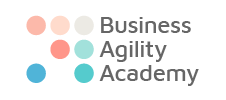Learning Objectives
Introduction
The goal of this set of learning objectives is to provide an introduction to agile product development. This is an introductory class covering some key foundation topics around the Agile movement. It is agnostic and, thus, is not specific to any particular agile framework. Instead, it aims to be principles-based and, therefore, applicable to all agile frameworks and multiple organizational contexts.
Course Format
The course can be taught in multiple formats, and we encourage educators to create an offering that is most suited to their client’s needs. It can be a live instructor-led class, self-paced online, or hybrid. It is up to educators to ensure that the learning objectives are met by every student. In order to maintain quality, we will gather feedback from every student. Suggested learning time, 16 hours.
Course Delivery
This class may be designed and delivered by any approved educator holding the E-BAC, P-BAC, or A-BAC credential.
Course Prerequisites
None.
Licensing Information
These learning objectives were created by Karim Harbott and Sohrab Salimi for the Business Agility Association. This work is licensed under the Creative Commons Attribution-NonCommercial-NoDerivatives 4.0 International License. To view a copy of this license, visit http://creativecommons.org/licenses/by-nc-nd/4.0/.
Learning Objectives
1 – The Context for Agile
The intent of this learning objective is to outline some common challenges with product development, and explain how and when Agile approaches can help to prevent them.
- Outline at least three key challenges faced when using traditional product development approaches in a fast-paced, uncertain, complex environment.
- Describe how the context of the work, in terms of complexity, uncertainty and volatility, influence the appropriateness of different approaches.
- List at least three benefits of small batches when working in uncertain environments.
- Explain the four values, and summarize the twelve principles, of the Manifesto for Agile Software Development.
2 – Agile Frameworks
The intent of this learning objective is to provide context around the various existing Agile frameworks and how they align with the Manifesto for Agile Software Development.
- Compare and contrast at least three established frameworks for agile development.
- Identify how the established agile frameworks are aligned with the Manifesto for Agile Software Development.
- Recognize that agile principles are applicable beyond software development and IT, and state at least one example.
3 – Agile Product Development
The intent of this learning objective is to outline the fundamental principles of Agile development.
- Explain at least two factors that influence the optimal batch size, and provide at least one example of a technique that could enable smaller batches.
- Explain the concepts of iterative and incremental delivery.
- Outline the timeline of a development iteration.
- Describe at least three types of feedback which teams need to receive during an agile development, and outline at least one example.
- Compare and contrast flow-based delivery models with iteration-based models.
4 – Agile Roles and Responsibilities
The intent of this learning objective is to define how the roles on a typical delivery team may need to evolve to support an agile development approach.
- Explain the role of product management and how that can fit within an Agile development environment.
- Explain the role of the Agile Coach in an Agile development environment.
- Define cross-functional teams and list at least three attributes of such teams.
- List at least three benefits of self-managing development teams, and describe at least one technique for supporting them.
- Explain how leaders’ and managers’ roles may need to evolve to support Agile development.
5 – Agile Planning and Stakeholder Engagement
The intent of this learning objective is to outline how organizations could undertake planning and forecasting of product development, and engage a variety of stakeholders during the development process to ensure alignment and manage expectations.
- Outline at least two techniques for planning an iteration in an Agile development.
- Outline at least two techniques for planning beyond a single iteration in an Agile development.
- Describe at least three techniques for engaging and managing internal and external stakeholders in an agile development.
6 – The Organizational Context
The intent of this learning objective is to align on the importance of leadership taking a systemic approach to enabling agility across the wider organization.
- Outline the importance of culture and how that can impact the effectiveness of Agile teams.
- Outline at least three key mindset shifts required by leaders and managers to make them become effective agile leaders.
- Explain at least three ways in which governance policies may need to change to support Agile development.
- Demonstrate at least one technique for taking a systemic approach to improving the value delivery system.
7 – Implementing Agile
The intent of this learning objective is to describe some patterns for how organizations can begin to implement Agile development.
- Compare and contrast an evolutionary and revolutionary approach to organizational change, and explain the pros and cons of each.
- Outline at least one change management approach that is aligned with Agile principles.
- Evaluate at least one case study of an Agile implementation.
- List at least five initial steps an organization should undertake before implementing Agile in an organization.
- Demonstrate at least one tool for taking an empirical and systemic approach to leading complex change.

